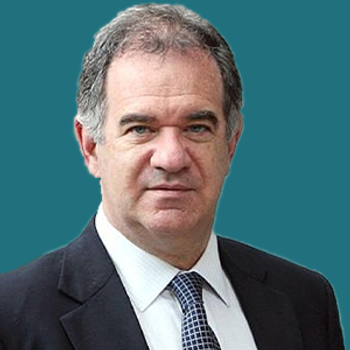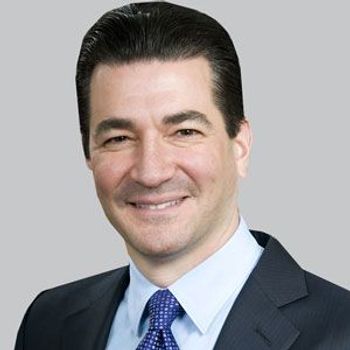
Ahead of the May 29, 2023, action date, the FDA is now seeking to hold an advisory committee meeting on Sarepta’s investigational agent SRP-9001 (also known as delandistrogene moxeparvovec) for the treatment of Duchenne muscular dystrophy.
Matt Hoffman, Associate Editorial Director for CGTLive™, has covered medical news for MJH Life Sciences, CGTLive’s parent company, since 2017. He also hosts the Medical World News show, Deep Dive. Follow him on Twitter @byMattHoffman or email him at [email protected]

Ahead of the May 29, 2023, action date, the FDA is now seeking to hold an advisory committee meeting on Sarepta’s investigational agent SRP-9001 (also known as delandistrogene moxeparvovec) for the treatment of Duchenne muscular dystrophy.

The investigator-initiated, single-arm, open-label trial will follow 20 patients with high-risk LBCL for 2 years, with a primary outcome measure of complete response rate per Lugano classification.

The full dataset, published in the New England Journal of Medicine, reveals the newly approved hemophilia B gene therapy reduced annualized bleeding rates and improved the need for factor IX infusions.

The study of VX-264, a stem cell-derived, fully differentiated pancreatic islet cell therapy, is already ongoing in Canada. It is expected to kick off in the United States in the first half of 2023.

Mesoblast’s allogeneic off-the-shelf therapy showed long-term benefit in supporting data among children with steroid-refractory acute graft versus host disease. The FDA has set a PDUFA action date of August 2, 2023, for its review.

Ultragenyx’s self-complementary AAV9-based gene therapy reduced levels of relevant CSF biomarkers, as well as improvements in neurocognitive assessments and behavioral domains, among patients without neurodegeneration.

Rajesh Pahwa, MD, FANA, FAAN, discussed balancing hope with current challenges with stem cell approaches in PD.

Shephard Mpofu, MD, part of the Novartis Gene Therapies leadership, shared his thoughts on the latest phase 3 data on onasemnogene abeparvovec (Zolgensma) from the SPR1NT trial.

Data from a phase 1/2 trial of AMT-130 supports continued enrollment for a higher-dose cohort of 6 x 1013 vg.

In an AAN plenary talk, Mark H. Tuszynski, MD, PhD, detailed the work he and colleagues have done to push stem cell therapy from the lab to the clinic to improve care for spinal cord injury.

The 2-stage study is an open-label, 2-stage clinical trial designed to evaluate safety and dose-escalation (stage 1) and safety and efficacy (stage 2) of surgically delivered AXO-AAV-GM2.

Neurocrine Biosciences and Voyager Therapeutics have terminated the Parkinson disease portion of their partnership, ending development for VY-AADC, also known as NBIb-1817.

Ronald Crystal, MD, chairman, Department of Genetic Medicine, Weill Cornell Medicine, discussed the promise of gene therapy for patients with Alzheimer disease and related disorders.

Patients treated with Axovant’s gene therapy AXO-Lenti-PD reported improvements of 40% in UPDRS-III scores, and 71% improvement in activities of daily living.

Solid Biosciences noted that its response to the agency requests for further information about manufacturing as well as updated safety and efficacy data on all dosed patients led to the lift.

Atara Biotherapeutics’ allogeneic EBV-targeted T-cell therapy, ATA188, is well-tolerated in phase 1, with a dose identified for the randomized placebo-controlled portion of the study.

Three-year data from a phase 1 study of Voyager Therapeutics’ VY-AADC01 suggest it is safe and offers potential benefits for patients with Parkinson disease.

Data show the therapy’s positive safety and expression results from a small number of clinical trial participants with limb-girdle muscular dystrophy type 2E out to 1 year.

Preliminary data from the ASPIRO study of Audentes Therapeutics resamirigene bilparvovec gene therapy suggests it is safe with improvements in neuromuscular and respiratory function.

The medical director of the Comprehensive Epilepsy Clinic at Nicklaus Children’s Hospital shared his insight into the potential of using an SCN1A-targeted adeno-associated viral vector-based gene therapy in epilepsy.

New data from clinical trials of ocrelizumab showed that the anti-CD20+ B cell therapy lowered serum NfL levels, and that the NfL levels offered prognostic value for disease progression in MS.

PF-06939926 is a recombinant adenoassociated virus serotype 9 (AAV9) capsid carrying mini-dystrophin, a shortened version of the human dystrophin gene, under the control of a muscle-specific promoter.

Axovant reported positive safety data as well as improvements in a number of measurements of motor function and dyskinesias in patients with Parkinson disease who received treatment with their investigational gene therapy.

New early-stage data suggest that vector‐mediated gene silencing of striatal CaV1.3 expression may hold promise for preventing the induction of levodopa-induced dyskinesias in Parkinson disease.

In a pair of phase 2 trials and a phase 1 study, patients with SMA types 1 and 2 treated with the gene therapy displayed a number of motor milestone achievements and a prolonged event-free survival rate.

The microdystrophin gene transfer therapy from Solid Biosciences has shown protein expression in the first 3 patients dosed. As a result, the company is expediting the planned dose-escalating activities.

Axovant Sciences has announced that, in addition to receiving positive feedback from the FDA on its clinical development, it is expecting data from the first 2 patients dosed to read out in March 2019.

The agency is anticipating upward of 200 INDs per year by 2020 and between 10 and 20 cell and gene therapy approvals per year by 2025.

Therapies designed to treat neurologic conditions have made up 25% of the submissions to the FDA for a Regenerative Medicine Advanced Therapy designation.

The president of the ANA offered his perspective on these novel genetic therapies, as well as other a few other areas of interest.